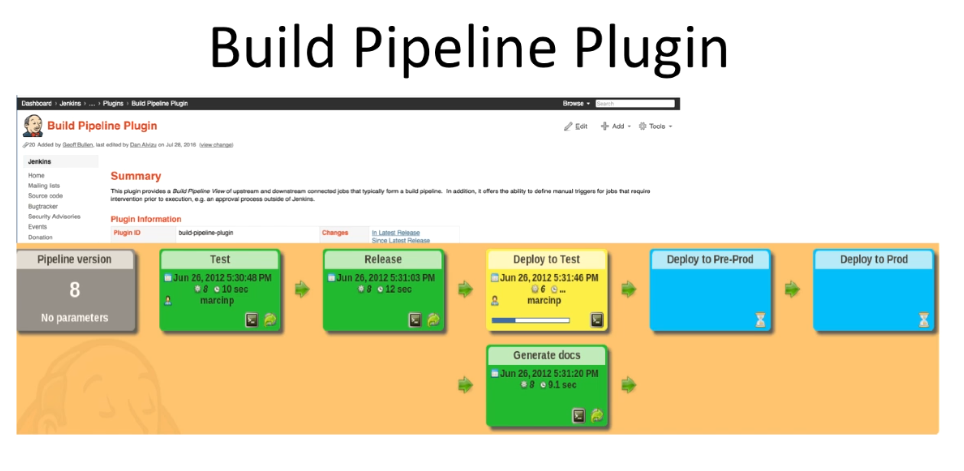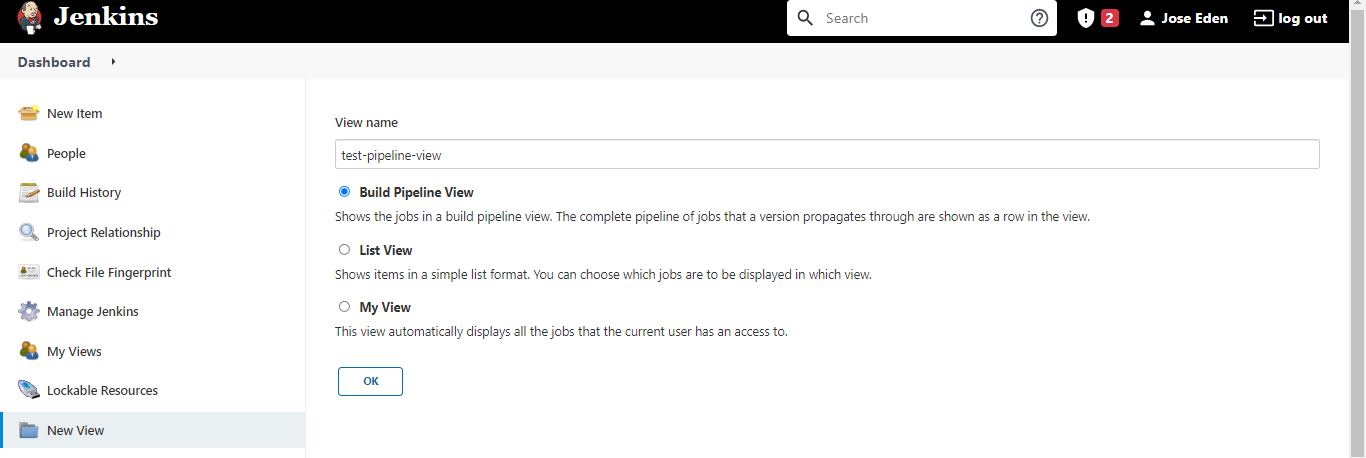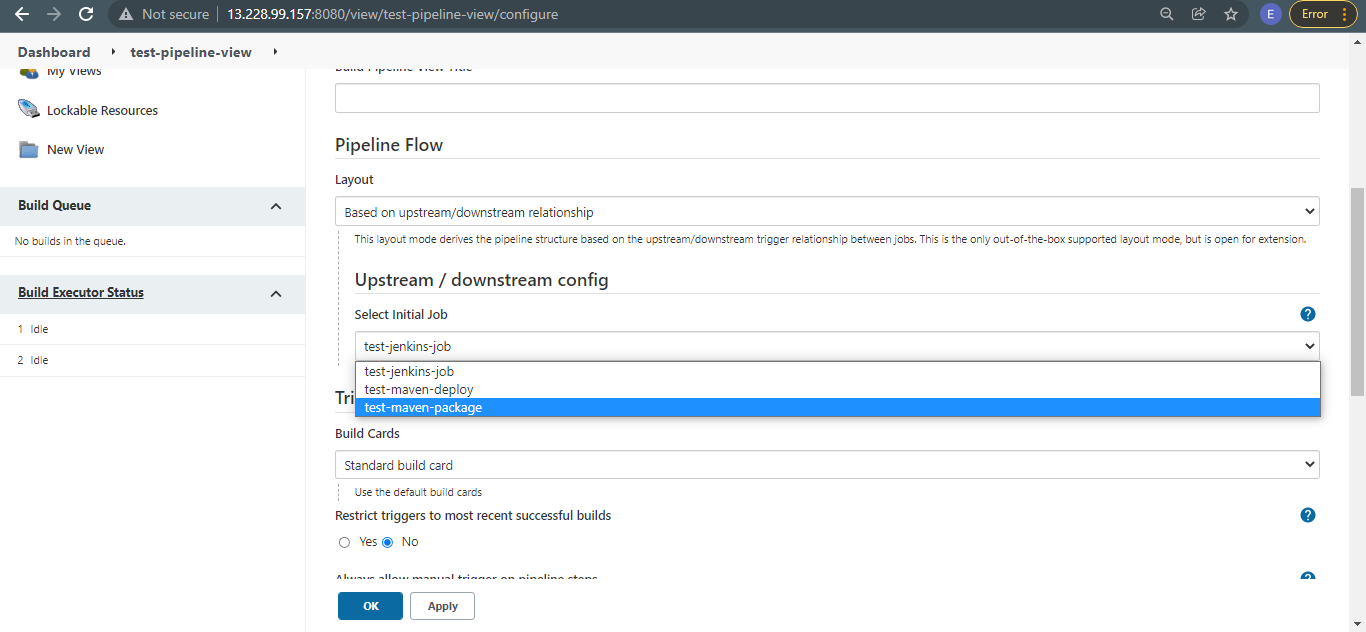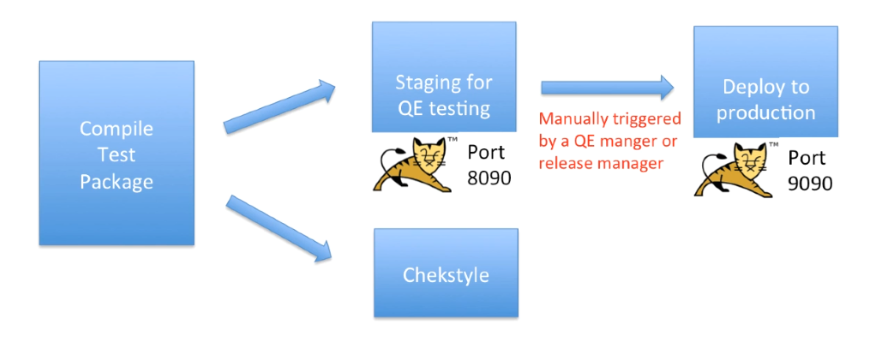Build Pipeline
Overview
A Jenkins build pipeline automates the software development process from code commit to deployment. It streamlines workflow, ensuring consistent builds and testing for efficient delivery.
- Series of stages for specific tasks like building and testing.
- Easy visualization of the development process to identify issues.
- Supports plugins for integration with testing and reporting tools.

Build Pipeline Plugin
Go to Manage Jenkins > Manage Plugins then search for build pipeline. Once it's installed, go back to the landing page, and select the "+" beside "All"

Enter a view name, tick Build pipeline view then ok.

In the Upstream / downstream config > Select Initial Job, we can select the job that will kick in or start the pipeline. In our previous lab, we use the test-maven-package as the initial job which will trigger the second job, test-maven-deploy.

You'll now be brought to the pipeline view. To trigger the pipeline, click Run. Running jobs will be in yellow while pending jobs are blue.

Once a job is done, it will turn to green.


Parallel Pipeline
A parallel pipeline in Jenkins allows multiple tasks to run simultaneously, enhancing efficiency and reducing overall build time.
- Enables running different stages at the same time, speeding up the pipeline.
- Ideal for testing and building across various environments or configurations.
For instance, a parallel stage could run a Checkstyle analysis alongside unit tests, ensuring code quality checks occur without delaying other processes.

Full Continuous Delivery Pipeline
A full continuous delivery (CD) pipeline automates the process of deploying code changes to production, ensuring that software can be released quickly and reliably.
- Integrates all stages from code commit to deployment.
- Automated testing, ensures code quality before deployment.
This approach reduces the risk of errors during deployment and allows for faster feature releases, improving overall software delivery.
